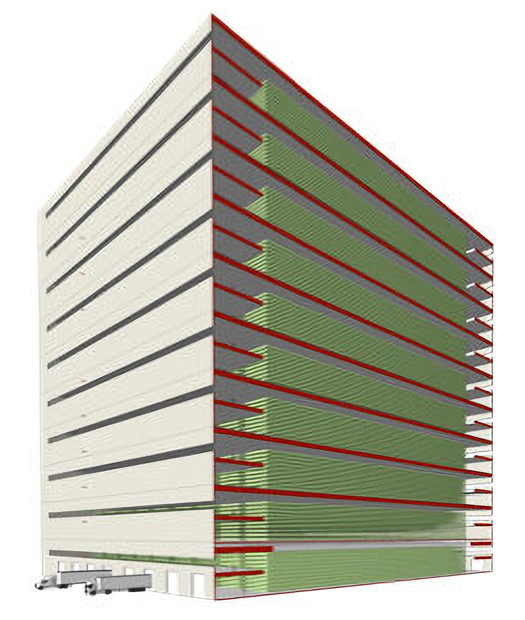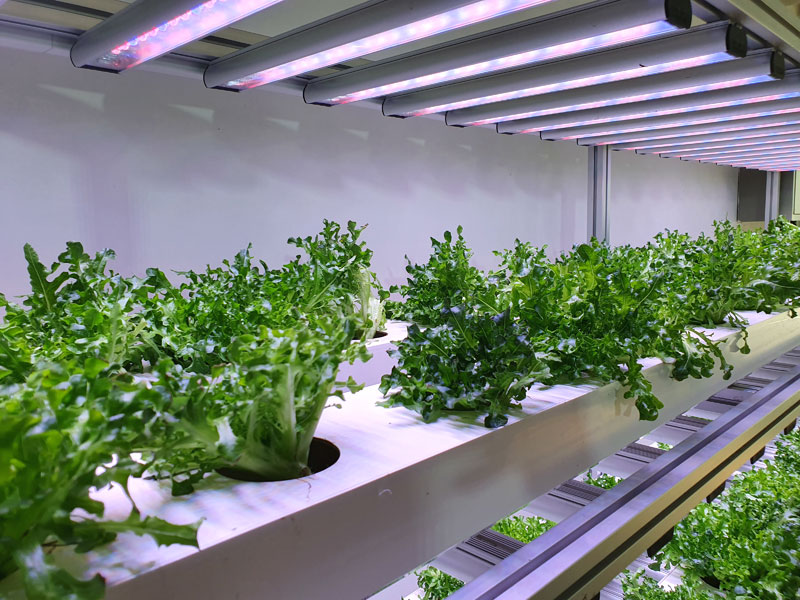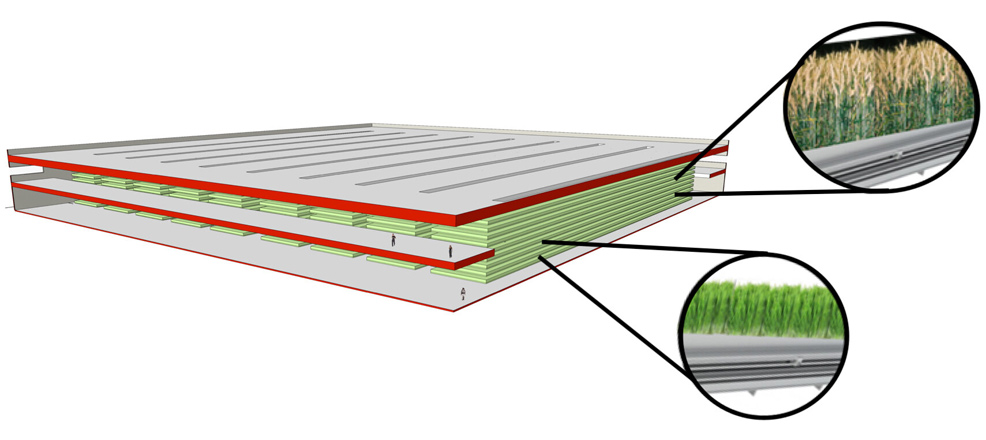
5th August 2020 Vertical farming of wheat: up to 600 times greater yield A new study finds that wheat grown using a 10-layer, indoor vertical farm could have a yield between 220 and 600 times greater than current farming methods.
A study in Proceedings of the National Academy of Sciences examines the efficiency of vertical farming methods to grow wheat. Wheat accounts for about 20% of the calories and proteins in a typical human diet. However, yields are variable and depend on several factors, including soil quality and weather. Vertical farming is a relatively new and emerging practice that involves growing crops in vertically stacked layers, with tightly controlled environmental conditions to optimise plant growth, alongside soilless farming techniques such as hydroponics, aquaponics, and aeroponics. First proposed in 1999, the concept has since grown into a $2bn industry and is predicted to expand more than six-fold by 2026. Presently, vertical farming technologies face economic challenges, with large start-up costs compared to traditional farms. However, a major advantage is the increased crop yield that comes with a smaller unit area of land requirement. Furthermore – and vital in the context of climate change – crops are resistant to weather disruption because of their placement indoors, meaning less crops lost to extreme or unexpected weather occurrences. Organic crops, i.e. without the need for chemical pesticides, are also easier to develop with vertical farms. Other benefits include the elimination of conventional ploughing, planting and harvesting by farm machinery – protecting soil and reducing carbon emissions. Lastly, because of its limited land usage, vertical farming is less disruptive to native plants and animals, leading to further conservation of local flora and fauna.
Dr. Paul Gauthier, a plant physiologist from Princeton University, New Jersey, USA, led a team of scientists who set out to determine the maximum potential for wheat production under ideal conditions. Gauthier and colleagues simulated wheat growth using two crop simulation models on a hectare of land in a 10-layer indoor vertical facility under optimised artificial light, temperature, and carbon dioxide levels. The simulated yields revealed that vertical farming could produce at least 700 ±40 tons per hectare (t/ha) and up to 1,940 ±230 t/ha of grain per year, which is 220 to 600 times the current world average wheat yield. In their study, the authors describe how compared with traditional farming methods in outdoor fields, indoor vertical farming also requires less land area, water, herbicides, and pesticides and results in less nutrient loss to the environment. Clearly, vertical farming of wheat has enormous potential. However, the study authors note that creating the conditions for such yields would require very high energy consumption, and this factor makes it commercially unviable at present. However, the situation may change in future decades, with solar and other new energy sources becoming ever cheaper and more widespread. In addition, increasingly severe and disruptive climate impacts combined with a global population exceeding 9 billion could lead to "food shocks" – triggering a spike in grain prices and demand for alternative crop production methods. "Although it is unlikely that indoor wheat farming will be economically competitive with current market prices in the near future, it could play an essential role in hedging against future climate or other unexpected disruptions to the food system," the authors write. "Nevertheless, maximum production potential remains to be confirmed experimentally, and further technological innovations are needed to reduce capital and energy costs in such facilities."
--- Follow us: Twitter | Facebook | Instagram | YouTube
Comments »
If you enjoyed this article, please consider sharing it:
|









